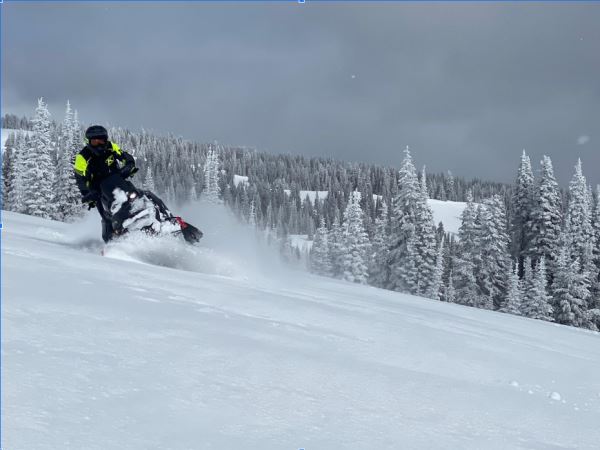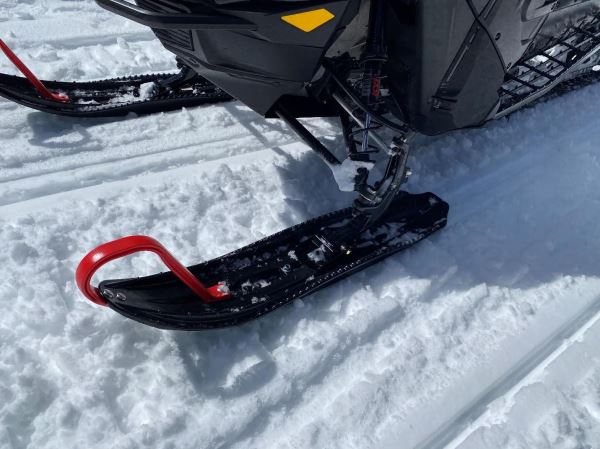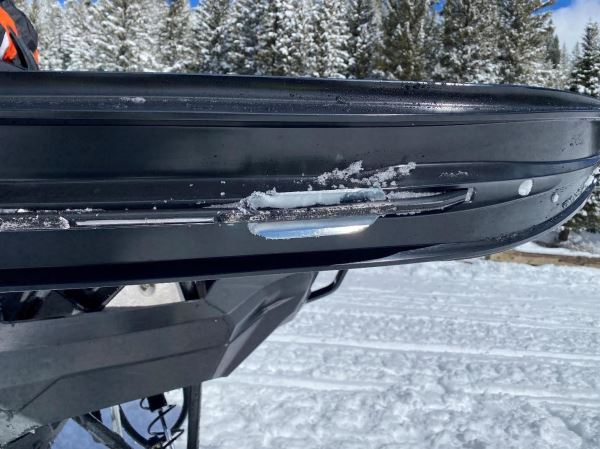 Sometimes it can be simple little things that improve the handling and performance of your snowmobile. This winter Starting Line Products asked if I would be interested in trying its Mohawk skis on my Ski-Doo Summit X. At first, I was a little hesitant since the Pilot DS 3 ski works well. But since I’m in the business of testing and reviewing snowmobile products, I decided to give the Mohawk a try even though my expectations weren’t very high.
Sometimes it can be simple little things that improve the handling and performance of your snowmobile. This winter Starting Line Products asked if I would be interested in trying its Mohawk skis on my Ski-Doo Summit X. At first, I was a little hesitant since the Pilot DS 3 ski works well. But since I’m in the business of testing and reviewing snowmobile products, I decided to give the Mohawk a try even though my expectations weren’t very high.
Boy, was I surprised.
 In head-to-head comparisons between two 2024 Summit Xs, one with the Mohawk and the other with the stock Pilot DS 3 skis, the Mohawk handled a lot better on the trails, offered better flotation in the deep snow and held a tighter edge on the sidehill. It made my Summit X feel 20 pounds lighter than the stock Summit X.
In head-to-head comparisons between two 2024 Summit Xs, one with the Mohawk and the other with the stock Pilot DS 3 skis, the Mohawk handled a lot better on the trails, offered better flotation in the deep snow and held a tighter edge on the sidehill. It made my Summit X feel 20 pounds lighter than the stock Summit X.
With the two sleds and a second rider, I was able to jump back and forth between the sleds and gather the impressions of the other rider to reinforce my own observations.
Nuts & Bolts
The Mohawk ski is slightly wider and shorter than the stock Summit X ski. It measures 7.5x39-inchs while the Pilot DS 3 measures 7x42-inches. Both have the same dimensional footprint. The extra width on the Mohawk seems to allow the front end to come up out of the snow faster.
The Mohawk ski is a little heavier than the Pilot DS 3, but you wouldn’t know that by how it makes the sled feel lighter. The Mohawk seemed to respond quicker in the snow. The design of its keel allowed it to control the direction more precisely. We did notice how predictable the edge of the ski was when we were sidehilling in about a foot of fresh but heavy snow.
As we rocked the sleds from side to side testing the ease and consistency in this rocking motion, the Mohawk delivered the best balance and most consistent feel. You could put it on the left side, and then on the right side and hold it there as long as you wanted.
Even though we observed the Mohawk was an improvement off the trail, the obvious strength of the ski was felt on the trail. Perhaps the most surprising feature to the Mohawk was the Keel Blade LR that we added to the bottom of the ski. At first, we were reluctant to install it since the butterfly-shaped stainless-steel piece looked a little goofy and was something that we weren’t familiar with. But once we started down the trail it became obvious the Mohawk had something special because of how it eliminated all the dartiness that you find on a hardpack trail.
 The Summit X with the Mohawks was so much more predictable to ride that you had the confidence to ride faster down the trail. Where the Pilot DS 3 would drift in the corners, the Mohawk would hold a firm line and keep the front end more level. The Pilot DS 3 would sometimes get locked into a frozen groove in the trail and battle for control of the steering where the Mohawk with the Keel Blade LR would just erase the previous carbide groves and go where you pointed it.
The Summit X with the Mohawks was so much more predictable to ride that you had the confidence to ride faster down the trail. Where the Pilot DS 3 would drift in the corners, the Mohawk would hold a firm line and keep the front end more level. The Pilot DS 3 would sometimes get locked into a frozen groove in the trail and battle for control of the steering where the Mohawk with the Keel Blade LR would just erase the previous carbide groves and go where you pointed it.
The biggest drawback with the Mohawk ski is that it gets a little pricey by the time you order all the components you need—ski bottoms, loops, mounting saddle brackets, saddle dampers, carbides and the Keel Blade LR—you can be well over $700. But to get the better control, lighter feel and easier sidehilling, it’s a good investment.